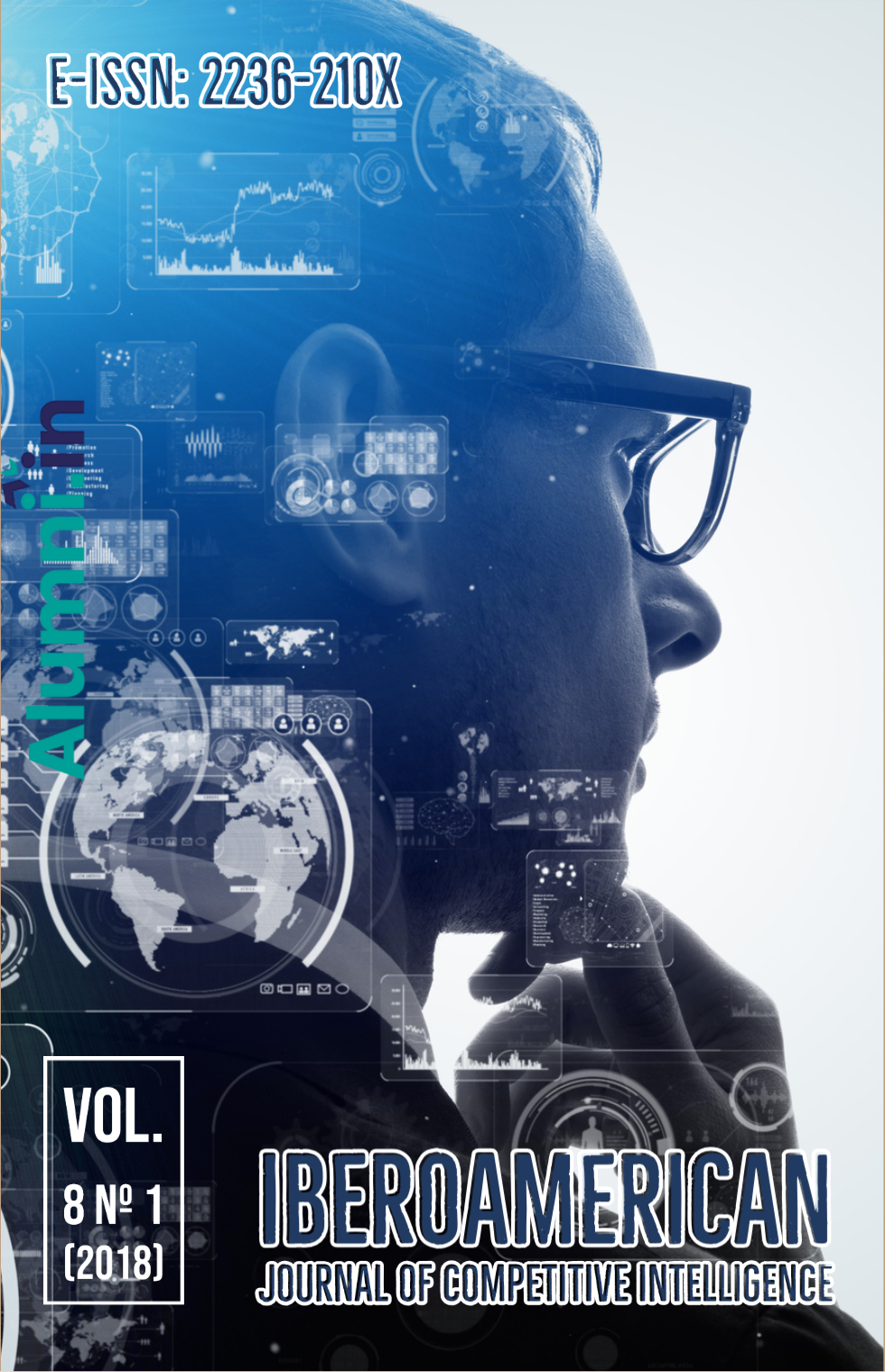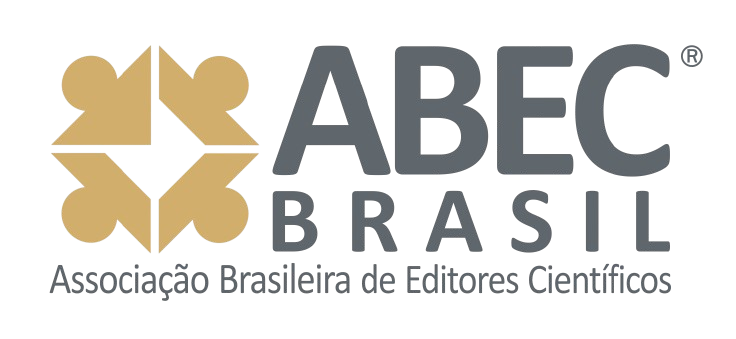CAPITAL HUMANO NAS ORGANIZAÇÕES INTENSIVAS EM CONHECIMENTO: DESAFIOS E PERSPECTIVAS
DOI:
https://doi.org/10.24883/IberoamericanIC.v8i1.246Keywords:
Capital Humano. Organizações Intensivas em Conhecimento. Profissionais de TI.Abstract
O constructo capital humano contempla o conjunto de habilidades, capacidades e conhecimentos de cada trabalhador e pode favorecer a produtividade, a inovação e o desempenho corporativo. A importância deste elemento se amplia nas empresas vinculadas à tecnologia da informação (TI), uma vez que estas são consideradas organizações intensivas em conhecimento (OICs). A partir destas perspectivas, o presente estudo objetiva caracterizar os profissionais de TI, inseridos em organizações intensivas em conhecimento, e verificar os aspectos relacionados à aquisição de capital humano pelos referidos profissionais. Para tanto, desenvolveu-se uma pesquisa de cunho qualitativo e quantitativo, nas empresas vinculadas à INTERNETSUL. Como principais resultados, identificou-se características importantes vinculadas ao perfil dos profissionais de TI, tais como, conhecimentos específicos na área, comprometimento, vontade de aprender e visão sistêmica. Além disso, verificou-se que os profissionais mais jovens aprimoram-se através da educação formal em maior proporção, se comparados aos indivíduos com maior idade. Embora os resultados da pesquisa assinalem um distanciamento entre a formação oferecida nas universidades e as necessidades do mercado de trabalho, percebeu-se que os profissionais buscam este tipo de formação como a principal forma de aquisição de capital humano.
Downloads
References
AFONSO, C. W.; CALADO, L. R. Organizações intensivas do conhecimento e sua relação com as estratégias de marketing. Revista de Administração, v. 46, n. 2, p. 150-160, 2011. DOI: https://doi.org/10.5700/rausp1004
ALMEIDA, R.; CARNEIRO, P. The return to firm investments in human capital. Labour Economics, v. 16, n. 1, p. 97-106, 2009. DOI: https://doi.org/10.1016/j.labeco.2008.06.002
BANERJEE, P. M. Sustainable human capital: product innovation and employee partnerships in technology firms. Cross Cultural Management: An International Journal, v. 20, n. 2, p. 216-234, 2013. DOI: https://doi.org/10.1108/13527601311313481
BAPNA, R.; LANGER, N.; MEHRA, A.; GOPAL, R.; GUPTA, A. Human capital investments and employee performance: an analysis of IT services industry. Management Science, v. 59, n. 3, p. 641-658, 2013. DOI: https://doi.org/10.1287/mnsc.1120.1586
BARDIN, L. Análise de conteúdo.4. ed. Paris: PUF, 2009.
BECKER, G. S. Human capital a theoretical and empirical analysis, with special reference to education. New York: Columbia University Press, 1964.
BELL, M.; ALBU, M. Knowledge systems and technological dynamism in industrial clusters in developing countries. World development, v. 27, n. 9, p. 1715-1734, 1999. DOI: https://doi.org/10.1016/S0305-750X(99)00073-X
BELL, J.; CRICK, D.; YOUNG, S. Small firm internationalization and business strategy an exploratory study of ‘knowledge-intensive’and ‘traditional’manufacturing firms in the UK. International Small Business Journal, v. 22, n. 1, p. 23-56, 2004. DOI: https://doi.org/10.1177/0266242604039479
BONTIS, N. Assessing knowledge assets: a review of the models used to measure intellectual capital. International Journal of Management Reviews, v. 3, n. 1, p. 41-60, 2001. DOI: https://doi.org/10.1111/1468-2370.00053
BORGHANS, A. H.; FOUARGE, D. J.; DE GRIP, A.; THOR, J. A. Werken en leren in Nederland. Researchcentrum voor Onderwijs en Arbeidsmarkt (ROA): Maastricht University, 2014.
CEDEFOP. Prevenir la obsolescencia de competencias. Centro Europeo para el Desarrollo y Formación Profesional. 2012. Disponível em: https://www.sepe.es/contenidos/personas/formacion/refernet/pdf/NIjulio2012.pdf. Acesso em: 28/09/2016.
CHOO, C. W. The knowing organization: how organizations use information to construct meaning, create knowledge and make decisions. 2. ed., New York: Oxford University Press, 2006.
CRESWELL, J. W. Projeto de pesquisa: métodos qualitativo, quantitativo e misto. Tradução Luciana de Oliveira da Rocha. 2. ed. Porto Alegre: Artmed, 2007.
DARNIHAMEDANI, P.; HESSELS, J. Human Capital as a Driver of Innovation Among Necessity-Based Entrepreneurs. International Review of Entrepreneurship, v. 14, n. 1, 2016.
DE GRIP, A.; VAN LOO, J. The economics of skills obsolescence: a review. In: DE GRIP, A.; VAN LOO, J.; MAYHEW, K. (ed.). The Economics of Skills Obsolescence: research in labor economics. Amsterdam: Elsevier, 2002, p. 1-26. DOI: https://doi.org/10.1016/S0147-9121(02)21003-1
DE GRIP, A.; SMITS, W. What affects lifelong learning of scientists and engineers?. International Journal of Manpower, v. 33, n. 5, p. 583-597, 2012. DOI: https://doi.org/10.1108/01437721211253209
FELÍCIO, J. A.; COUTO, E.; CAIADO, J. Human capital, social capital and organizational performance. Management Decision, v. 52, n. 2, p. 350-364, 2014. DOI: https://doi.org/10.1108/MD-04-2013-0260
FIELD, A. Descobrindo a estatística usando o SPSS. 2 ed. Porto Alegre: Artmed, 2009.
GIBBS, G. Análise de dados qualitativos. Porto Alegre: Bookman, 2009.
GOULD, D. M.; RUFFIN, R. J. What determines economic growth?. Economic Review-Federal Reserve Bank of Dallas, p. 25, 1993.
HAIR, J. F.; BLACK, W. C.; BABIN, B. J.; ANDERSON, R. E.; TATHAM, R. L. Análise multivariada de dados. 6. ed. Porto Alegre: Bookman, 2009.
HATCH, N. W.; DYER, J. H. Human capital and learning as a source of sustainable competitive advantage. Strategic Management Journal, v. 25, n. 12, p. 1155-1178, 2004. DOI: https://doi.org/10.1002/smj.421
KREDLER, M. Experience vs. obsolescence: A vintage-human-capital model. Journal of Economic Theory, v. 150, p. 709-739, 2014. DOI: https://doi.org/10.1016/j.jet.2013.08.003
LAI, K. W.; KHADDAGE, F.; KNEZEK, G. Blending student technology experiences in formal and informal learning. Journal of Computer Assisted Learning, v. 29, n. 5, p. 414-425, 2013. DOI: https://doi.org/10.1111/jcal.12030
LUNDVALL, B. Å.; JOHNSON, B.; ANDERSEN, E. S.; DALUM, B. National systems of production, innovation and competence building. Research Policy, v. 31, n. 2, p. 213-231, 2002. DOI: https://doi.org/10.1016/S0048-7333(01)00137-8
MAKANI, J.; MARCHE, S. Classifying organizations by knowledge intensity–necessary next-steps. Journal of Knowledge Management, v. 16, n. 2, p. 243-266, 2012. DOI: https://doi.org/10.1108/13673271211218843
MILES, I. Knowledge intensive business services: prospects and policies. Foresight, v. 7, n. 6, p. 39-63, 2005. DOI: https://doi.org/10.1108/14636680510630939
MINCER, J. Investment in human capital and personal income distribution. Journal of Political Economy, v. 66, n. 4, p. 281-302, 1958. DOI: https://doi.org/10.1086/258055
MURILLO, I. P. Human capital obsolescence: some evidence for Spain. International Journal of Manpower, v. 32, n. 4, p. 426-445, 2011. DOI: https://doi.org/10.1108/01437721111148540
NELEN, A.; DE GRIP, A. Why Do Part‐time Workers Invest Less in Human Capital than Full‐timers?. Labour, v. 23, n. s1, p. 61-83, 2009. DOI: https://doi.org/10.1111/j.1467-9914.2008.00439.x
NEVES, S. M.; SILVA, C. E. S. da; SALOMON, V. A. P.; SILVA, A. F. da; SOTOMONTE, B. E. P. Risk management in software projects through knowledge management techniques: cases in Brazilian incubated technology-based firms. International Journal of Project Management, v. 32, n. 1, p. 125-138, 2014. DOI: https://doi.org/10.1016/j.ijproman.2013.02.007
ONKELINX, J.; MANOLOVA, T. S.; EDELMAN, L. F. The human factor: Investments in employee human capital, productivity, and SME internationalization. Journal of International Management, v. 22, n. 4, p. 351-364, 2016. DOI: https://doi.org/10.1016/j.intman.2016.05.002
PALACIOS-MARQUES, D.; GIL-PECHUÁN, I.; LIM, S. Improving human capital through knowledge management practices in knowledge-intensive business services. Service Business, v. 5, n. 2, p. 99, 2011. DOI: https://doi.org/10.1007/s11628-011-0104-z
PENNINGS, J. M.; LEE, K.; VAN WITTELOOSTUIJN, A. Human capital, social capital, and firm dissolution. Academy of Management Journal, v. 41, n. 4, p. 425-440, 1998. DOI: https://doi.org/10.2307/257082
PEETERS, J.; DE BACKER, F.; BUFFEL, T.; KINDEKENS, A.; STRUYVEN, K.; ZHU, C.; LOMBAERTS, K. Adult learners’ informal learning experiences in formal education setting. Journal of Adult Development, v. 21, n. 3, p. 181-192, 2014. DOI: https://doi.org/10.1007/s10804-014-9190-1
PORTER, M. E. A Vantagem Competitiva das Nações. In: MONTGOMERY, C. A.; PORTER, M. E. (ed.) Estratégia: a busca da vantagem competitiva. Rio de Janeiro: Campus, 1998, p. 145-179.
PLOYHART, R. E.; MOLITERNO, T. P. Emergence of the human capital resource: a multilevel model. Academy of Management Review, v. 36, n. 1, p. 127-150, 2011. DOI: https://doi.org/10.5465/amr.2009.0318
PRAJOGO, D. I.; OKE, A. Human capital, service innovation advantage, and business performance: the moderating roles of dynamic and competitive environments. International Journal of Operations & Production Management, v. 36, n. 9, 974-994, 2016. DOI: https://doi.org/10.1108/IJOPM-11-2014-0537
RAINERI, A. Linking human resources practices with performance: the simultaneous mediation of collective affective commitment and human capital. The International Journal of Human Resource Management, article in press, p. 1-30, 2016. DOI: https://doi.org/10.1080/09585192.2016.1155163
SAMAGAIO, A.; RODRIGUES, R. Human capital and performance in young audit firms. Journal of Business Research, v. 69, n. 11, p. 5354-5359, 2016. DOI: https://doi.org/10.1016/j.jbusres.2016.04.137
SCHUGURENSKY, D. Vingt mille lieues sous les mers: les quatre défis de l'apprentissage informel. Revue Française de Pédagogie, n. 3, p. 13-27, 2007. DOI: https://doi.org/10.4000/rfp.583
SCHULTZ, T. W. Investment in Human Capital. The American Economic Review, v. 51, n. 1, p. 1-17, 1961.
SUBRAMANIAM, M.; YOUNDT, M. A. The influence of intellectual capital on the types of innovative capabilities. Academy of Management Journal, v. 48, n. 3, p. 450-463, 2005. DOI: https://doi.org/10.5465/amj.2005.17407911
TERRA, J. C. Gestão do conhecimento: o grande desafio empresarial. Rio de Janeiro: Elsevier, 2005.
TRÍOLA, M. F. Introdução à Estatística: atualização da tecnologia. 11. ed. Rio de Janeiro: LTC, 2013.
VENCESLAU, M. Falta de profissionais de TI se agravará no Brasil, diz IDC. INFO Online, São Paulo, 19. Mar. 2013. Disponível em <http://exame.abril.com.br/carreira/noticias/falta-de-profissionais-de-ti-se-agravara-no-brasil-diz-idc>. Acesso em 03 mai. 2014.
VIANA, G.; LIMA, J. F. Capital humano e crescimento econômico. Interações, v. 11, n. 2, p. 137-148, 2010. DOI: https://doi.org/10.1590/S1518-70122010000200003
XIAOYING, B. Learning system and its implications for macroeconomic growth. In: 2008 International Symposium on Knowledge Acquisition and Modeling. v. 4732885, p. 547-550, 2008. DOI: https://doi.org/10.1109/KAM.2008.122
YIN, R. K. Estudo de caso: planejamento e métodos. 5 ed. Porto Alegre: Bookman, 2015.
WEBER, S. Human capital depreciation and education level. International Journal of Manpower, v. 35, n. 5, p. 613-642, 2014. DOI: https://doi.org/10.1108/IJM-05-2014-0122
WRIGHT, P. M.; DUNFORD, B. B.; SNELL, S. A. Human resources and the resource based view of the firm. Journal of Management, v. 27, n. 6, p. 701-721, 2001. DOI: https://doi.org/10.1177/014920630102700607
Downloads
Published
How to Cite
Issue
Section
License
Authors who publish with this journal agree to the following terms:
1. Authors who publish in this journal agree to the following terms: the author(s) authorize(s) the publication of the text in the journal;
2. The author(s) ensure(s) that the contribution is original and unpublished and that it is not in the process of evaluation by another journal;
3. The journal is not responsible for the views, ideas and concepts presented in articles, and these are the sole responsibility of the author(s);
4. The publishers reserve the right to make textual adjustments and adapt texts to meet with publication standards.
5. Authors retain copyright and grant the journal the right to first publication, with the work simultaneously licensed under the Creative Commons Atribuição NãoComercial 4.0 internacional, which allows the work to be shared with recognized authorship and initial publication in this journal.
6. Authors are allowed to assume additional contracts separately, for non-exclusive distribution of the version of the work published in this journal (e.g. publish in institutional repository or as a book chapter), with recognition of authorship and initial publication in this journal.
7. Authors are allowed and are encouraged to publish and distribute their work online (e.g. in institutional repositories or on a personal web page) at any point before or during the editorial process, as this can generate positive effects, as well as increase the impact and citations of the published work (see the effect of Free Access) at http://opcit.eprints.org/oacitation-biblio.html
• 8. Authors are able to use ORCID is a system of identification for authors. An ORCID identifier is unique to an individual and acts as a persistent digital identifier to ensure that authors (particularly those with relatively common names) can be distinguished and their work properly attributed.













